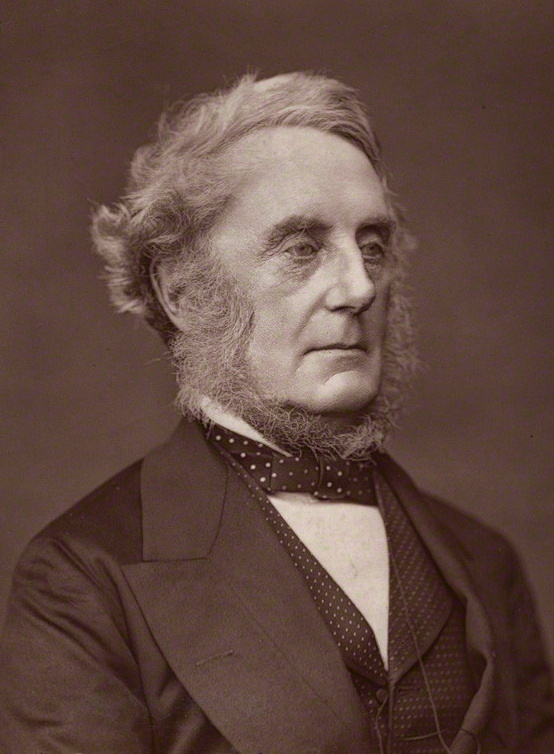|
Budbrooke Barracks
Budbrooke Barracks was a military installation near Budbrooke in Warwickshire, England. History The barracks were built on agricultural land in 1877. Their creation took place as part of the Cardwell Reforms which encouraged the localisation of British military forces. The barracks became the depot for the two battalions of the 6th (1st Warwickshire) Regiment of Foot. Following the Childers Reforms, the regiment evolved to become the Royal Warwickshire Regiment with its depot in the barracks in 1881. St Michael's Church became the battalion church at that time. Many recruits enlisted at the barracks at the start of the First World War. The barracks were demoted to the status of out-station to the Forester Brigade depot at Glen Parva Barracks Glen Parva Barracks was a military installation at Glen Parva near South Wigston in Leicestershire. History The barracks opened under the name of Wigston Barracks in 1881. Their creation took place as part of the Cardwell Reforms which ... [...More Info...] [...Related Items...] OR: [Wikipedia] [Google] [Baidu] |
Budbrooke
Budbrooke is a village and civil parish in the Warwick district of Warwickshire, England. It is 3 miles west of Warwick and according to the 2001 census the parish had a population of 2,319, reducing to 1,863 at the 2011 Census. Most of the population of Budbrooke live in Hampton Magna, a housing estate built in the late 1960s, with other smaller settlements in Budbrooke Village and Hampton on the Hill. History Middle Ages The original parish dates from 1086 (Domesday Book) when Ralph de Limesi held Budebroc for William the Conqueror. It consisted of five hides of land, a mill, farms and woods. It was one mile long and three furlongs wide. The parish church of St. Michael dates from the twelfth century. In 1350, the village suffered from the Black Death and became a ghost town. Most of the village, including the vicarage and the Manor house, crumbled. The track which now passes under the railway arch known as Kyte's Bridge was the most likely route for the corpses being ... [...More Info...] [...Related Items...] OR: [Wikipedia] [Google] [Baidu] |
Ministry Of Defence (United Kingdom)
The Ministry of Defence (MOD or MoD) is a Departments of the Government of the United Kingdom, ministerial department of the Government of the United Kingdom. It is responsible for implementing the defence policy set by the government and serves as the headquarters of the British Armed Forces. The MOD states that its principal objectives are to defend the United Kingdom of Great Britain and Northern Ireland and its interests and to strengthen international peace and stability. The MOD also manages day-to-day running of the armed forces, contingency planning and defence procurement. The expenditure, administration and policy of the MOD are scrutinised by the Defence Select Committee, except for Defence Intelligence which instead falls under the Intelligence and Security Committee of Parliament. History During the 1920s and 1930s, British civil servants and politicians, looking back at the performance of the state during World War I, concluded that there was a need for greater ... [...More Info...] [...Related Items...] OR: [Wikipedia] [Google] [Baidu] |
War Office
The War Office has referred to several British government organisations throughout history, all relating to the army. It was a department of the British Government responsible for the administration of the British Army between 1857 and 1964, at which point its functions were transferred to the new Ministry of Defence (United Kingdom), Ministry of Defence (MoD). This article contains text from this source, which is available under th Open Government Licence v3.0 © Crown copyright It was equivalent to the Admiralty (United Kingdom), Admiralty at that time, which was responsible for the Royal Navy (RN), and (much later) the Air Ministry, which oversaw the Royal Air Force (RAF). The name 'Old War Office' is also given to the former home of the department, located at the junction of Horse Guards Avenue and Whitehall in central London. The landmark building was sold on 1 March 2016 by HM Government for more than British pound, £350 million, on a 250-year lease for conversion int ... [...More Info...] [...Related Items...] OR: [Wikipedia] [Google] [Baidu] |
Royal Warwickshire Regiment
The Royal Warwickshire Regiment, previously titled the 6th Regiment of Foot, was a line infantry regiment of the British Army in continuous existence for 283 years. The regiment saw service in many conflicts and wars, including the Second Boer War and both the First and Second World Wars. On 1 May 1963, the regiment was re-titled, for the final time, as the Royal Warwickshire Fusiliers and became part of the Fusilier Brigade. In 1968, by now reduced to a single Regular battalion, the regiment was amalgamated with the other regiments in the Fusilier Brigade – the Royal Northumberland Fusiliers, the Royal Fusiliers (City of London Regiment) and the Lancashire Fusiliers – into a new large infantry regiment, to be known as the Royal Regiment of Fusiliers, becoming the 2nd Battalion of the new regiment. History 17th century The regiment was raised in December 1673 by Sir Walter Vane, one of three 'English' units in the Dutch Anglo-Scots Brigade, a mercenary formation whos ... [...More Info...] [...Related Items...] OR: [Wikipedia] [Google] [Baidu] |
Cardwell Reforms
The Cardwell Reforms were a series of reforms of the British Army undertaken by Secretary of State for War Edward Cardwell between 1868 and 1874 with the support of Liberal prime minister William Ewart Gladstone. Gladstone paid little attention to military affairs but he was keen on efficiency. In 1870, he pushed through Parliament major changes in Army organisation. The German Empire's stunning triumph over the Second French Empire in the Franco-Prussian War proved that the Prussian system of professional soldiers with up-to-date weapons was far superior to the traditional system of gentlemen-soldiers that Britain used. The Reforms were not radical; they had been brewing for years and Gladstone seized the moment to enact them. The goal was to centralise the power of the War Office, abolish the purchase of officers' commissions, and create reserve forces stationed in Britain by establishing short terms of service for enlisted men. Ending the purchase system was controversial ... [...More Info...] [...Related Items...] OR: [Wikipedia] [Google] [Baidu] |
Regimental Depot
The regimental depot of a regiment is its home base for recruiting and training. It is also where soldiers and officers awaiting discharge or postings are based and where injured soldiers return to full fitness after discharge from hospital before returning to full duty. Normally, a variety of regimental stores will also be kept at the depot. The regimental depot is not the same as the regimental headquarters (where the main officers' mess and certain central functions are based), though in practice the two will often be co-located. United Kingdom In a military dictionary of 1802, the word Depot is given multiple meanings: primarily it is said to describe 'any particular place in which military stores are deposited for the use of the army'; but 'it also signifies an appropriated fort, or place, for the reception of recruits, or detached parties, belonging to different regiments'. At that time Maidstone Barracks served as depot for the British Cavalry; while the depot for th ... [...More Info...] [...Related Items...] OR: [Wikipedia] [Google] [Baidu] |
Childers Reforms
The Childers Reforms of 1881 reorganised the infantry regiments of the British Army. The reforms were done by Secretary of State for War Hugh Childers during 1881, and were a continuation of the earlier Cardwell Reforms. The reorganisation was effected by General Order 41/1881, issued on 1 May 1881, amended by G.O. 70/1881 dated 1 July, which created a network of multi-battalion regiments. In England, Wales and Scotland, each regiment was to have two regular or "line" battalions and two militia battalions. In Ireland, there were to be two line and three militia battalions. This was done by renaming the numbered regiments of foot and county militia regiments. In addition, the various corps of county rifle volunteers were to be designated as volunteer battalions. Each of these regiments was associated by headquarters location and territorial name to its local "Regimental District". The reforms became effective on 1 July. From 1881, regimental seniority numbers were officially ... [...More Info...] [...Related Items...] OR: [Wikipedia] [Google] [Baidu] |
World War I
World War I or the First World War (28 July 1914 – 11 November 1918), also known as the Great War, was a World war, global conflict between two coalitions: the Allies of World War I, Allies (or Entente) and the Central Powers. Fighting took place mainly in European theatre of World War I, Europe and the Middle Eastern theatre of World War I, Middle East, as well as in parts of African theatre of World War I, Africa and the Asian and Pacific theatre of World War I, Asia-Pacific, and in Europe was characterised by trench warfare; the widespread use of Artillery of World War I, artillery, machine guns, and Chemical weapons in World War I, chemical weapons (gas); and the introductions of Tanks in World War I, tanks and Aviation in World War I, aircraft. World War I was one of the List of wars by death toll, deadliest conflicts in history, resulting in an estimated World War I casualties, 10 million military dead and more than 20 million wounded, plus some 10 million civilian de ... [...More Info...] [...Related Items...] OR: [Wikipedia] [Google] [Baidu] |
Forester Brigade
The Forester Brigade (known as the Midland Brigade until 1958) was an administrative formation of the British Army from 1948 to 1964. The Brigade administered the regular infantry regiments of the English Midlands. After the Second World War the British Army had fourteen infantry depots, each bearing a letter. The depots were territorially organised, and Infantry Depot F at Strensall was the headquarters for the county regiments of Derbyshire, Leicestershire, Lincolnshire, Nottinghamshire and Warwickshire. In 1948, the depots adopted names and this depot became the Midland Brigade with all regiments being reduced to a single battalion at the same time. The Midland Brigade was formally formed on 14 July 1948, combining the depots of four regiments: * The Royal Warwickshire Regiment * The Royal Lincolnshire Regiment * The Royal Leicestershire Regiment * The Sherwood Foresters (Nottinghamshire and Derbyshire Regiment) Under the 1957 Defence White Paper changes announced in Jul ... [...More Info...] [...Related Items...] OR: [Wikipedia] [Google] [Baidu] |
Glen Parva Barracks
Glen Parva Barracks was a military installation at Glen Parva near South Wigston in Leicestershire. History The barracks opened under the name of Wigston Barracks in 1881. Their creation took place as part of the Cardwell Reforms which encouraged the localisation of British military forces. The barracks became the depot for the two battalions of the 17th (Leicestershire) Regiment of Foot as well as the 45th (Nottinghamshire) Regiment of Foot. Following the Childers Reforms, the barracks became the depot of the Royal Leicestershire Regiment in 1881. Tens of thousands of recruits and conscripts were trained there for deployment during the First World War. The barracks went on to become the regional centre for infantry training as the Forester Brigade Depot in 1960. They were closed in the late 1960s and most of the buildings were sold. Although Glen Parva Young Offenders Institution now occupies much of the site a unit of the Royal Army Pay Corps The Royal Army Pay Corps ( ... [...More Info...] [...Related Items...] OR: [Wikipedia] [Google] [Baidu] |
Installations Of The British Army
Installation may refer to: * Installation (Christianity), a Christian liturgical act that formally makes a clergyman assume office of his appointed position at a particular place * Installation (computer programs), the act of making the program ready for execution * Installation art, an artistic genre of three-dimensional works that are often site-specific and designed to transform the perception of a space * Military installation, a grouping of facilities that constitute a permanent military base {{disambig ... [...More Info...] [...Related Items...] OR: [Wikipedia] [Google] [Baidu] |




